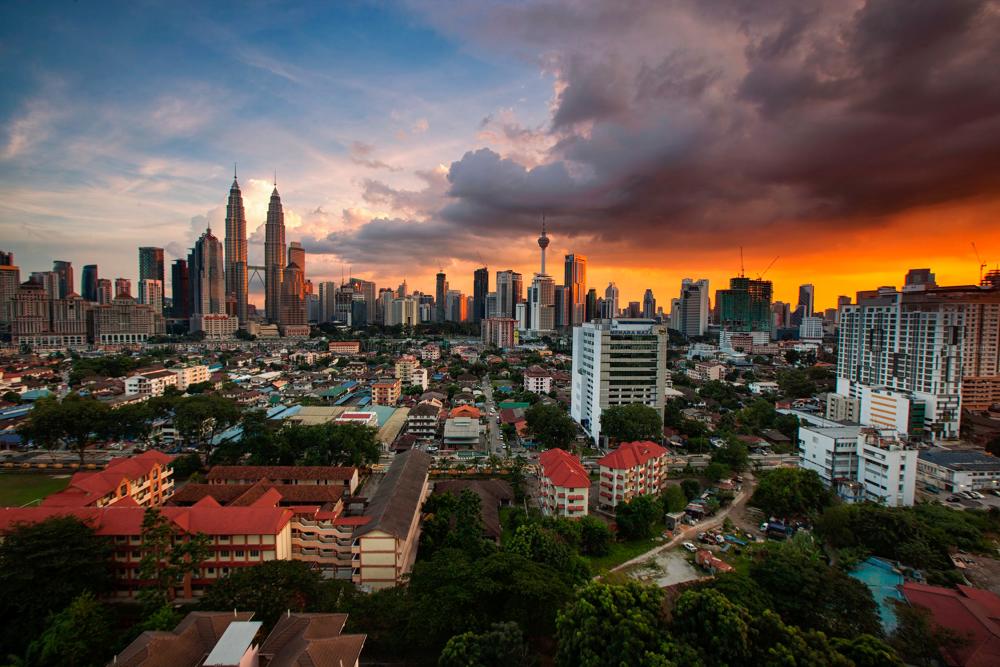THERE are many in the job markets who have to make do with the minimum wage, which is not enough to keep up with the rising cost of living due to inflationary pressures that is set against the confluence of supply-chain issues. This is partly driven by geoeconomic manipulations (e.g. price-setting enabled by market dominance or cartel arrangements) and impact of extreme weather patterns, together with the latest geopolitical flare-ups in Ukraine, among others. What more the pre-existing elevated expenses in an urban Malaysian setting?
On March 19, 2022, Prime Minister Datuk Seri Ismail Sabri Yaakob announced that the new minimum wage will be adjusted to RM1,500 per month from May 1, 2022 onwards. Although this would see a 25% increase from the previous minimum wage of RM1,200, questions are raised as to whether it is enough or commensurate with the actual cost of living, especially in the urban conurbations and industrial heartlands of the Klang Valley, where also more than one-third of the entire population is situated, Iskandar Malaysia, Penang, etc.
The minimum wage should be a fair reflection of the approximation of the living costs. Hence, the gap between the minimum wage and what is called the “living wage” should never be significant. In fact, the aim of the minimum wage should be to approximate the “living wage” as much as possible – under present conditions – until both are “symmetrical” (aligned) or synonymous.
The basic definition of a “living wage” is the wage rate that is high enough for the average worker to maintain a decent/adequate standard of living and appropriate or respectable lifestyle. In other words, a “living wage” is the minimum amount an individual or household needs in exercising the basic and fundamental rights to a standard of living – which can be measured as above the poverty line income, now defined as RMM2,208.
According to Bank Negara’s provisional definition of the “living wage” in its report, “The Living Wage: Beyond Making Ends Meet” (2018), a single person would need at least RM2,700, and similarly a couple with two children would require RM6,500 to “survive” in Kuala Lumpur. The calculation is based on 2016 estimates.
It is expected that Bank Negara will now need to revise its provisional estimates in light of the recent cost of living and inflationary dynamics. The same report also found that after accounting for the increase in cost of living, B40 households only experience a paltry 3.8% growth in real income.
In addition, the right to basic enjoyment of necessities such as utilities should be expanded to include internet connectivity, which is already, implicitly, a basic right and could be on course to becoming a constitutional right in the future.
Of course, when talking about the rate by which to maintain a normal standard of living, the numbers will vary based on location and level of economic development. Again, a couple with three children living in highly urbanised Kuala Lumpur is bound to have a higher spending average per month compared with a family of the same size in less economically-developed Kelantan.
However, the “living wage” can and should be adaptive in nature – to accommodate the differentials and variations in the specific cost of living at the micro-level as conditioned by regions/locations and economic growth.
Towards that end, EMIR Research calls for the minimum wage to be reconceptualised as a starting point instead of a benchmark. This means that businesses should alter their salary caps/limits according to the cost of living in the area. The minimum wage should be taken as the base, which is then topped up by an additional sum to make an overall salary that realistically corresponds to the cost of living and, hence, the “living wage”.
This means updating the Minimum Wage Order on a regular basis – to provide guidelines or otherwise a separate ministry/ministerial guidelines, which contain the calculations or estimates for the “living wage”. By its very nature, the introduction of a “living wage” is not a statutory requirement but businesses that implement it should be entitled to tax incentives and allowances.
Ideologues who are against the minimum wage increases, irrespective of the context and circumstances, believe that by default, the rise of wages due to government-imposed “diktat” undermines or disturbs the so-called “free market” equilibria (“balance” between supply and demand), and this will result in higher involuntary unemployment than otherwise would be the case – since the market cannot clear on the basis of the minimum wage increases.
This was put to the test in 1993 by David Card, who is the winner of the 2021 Nobel Laureate for Economics. In a study on the effects of the rise of minimum wage on employment (“Minimum Wages and Employment: A case study of the fast food industry in New Jersey and Pennsylvania”, 1993), he compared the employment trend in fast food restaurants between two bordering states in the US, where the minimum wage was increased on one side but not on the other.
What he found was that increasing the minimum wage had no impact on employment at all, whereas the pattern of price changes as part of the rise in input (labour) costs yielded statistically insignificant findings of cost-pass through, i.e. there was no evidence that menu prices rose faster among the stores that were affected by the rise in minimum wage.
David Card’s seminal study was conducted post-Volcker recession, where interest rate hikes of up to 20% were deployed to tame inflation, but at the expense of unemployment, which reached 9% at one point – so that the inflationary momentum thereafter increased on a steadier rate to 5% by 1990.
When we look at the wage growth in Malaysia, it does track a consistent path with inflation, more or less. According to statistics, as inflation rose, so did the wage growth rate on the most part. However, given the low base rate of salaries, a wage increment of 6% to 8% would only mean an additional RM150 per year on average in absolute terms. When inflation is taken into consideration, the real value of wages is further undercut.
Building upon the current minimum wage increase, the government should come up with a roadmap that seeks to revise the minimum wage in line with Section 25 of the National Wages Consultative Council Act (2011) to achieve close approximation with the “living wage”, which too needs to be revised accordingly.
The integration of the “living wage” concept into Malaysia’s wage structure should be done through close coordination between the government and private sector. A way to do this is by implementing a “progressive wage” model (see EMIR Research article, “Combine statutory minimum wage with progressive wage model too”). As the name implies, a progressive wage model allows for the linking of wage growth with productivity as measured by upskilling or reskilling and cross-skilling, where applicable.
So, the minimum wage should be reconceptualised as the base, not benchmark, with either the “add-on” to make up the “living wage” or a progressive wage model – or both “living” wage and “progressive wage” model. The incorporation of “living wage” into Malaysia’s wage structure is something that should be considered as part of the wider anti-poverty agenda of the government, and also in our quest to be a high-income nation.
Going forward, the “living wage” will not only promote/enhance financial security but also critically help to rebuild the very low retirement savings of some 48%, or 6.1 million, low-income Employees’ Provident Fund members.
At the same time, those qualified would also be in a position to contribute to our nation’s coffers in the form of paying personal income tax. A “living wage” would also partly enable the reintroduction of the GST, if there is a consensus, at an appropriate time and with conditions.
Jason Loh Seong Wei and Rosihan Addin are part of the research team of EMIR Research, an independent think tank focused on strategic policy recommendations based on rigorous research.
Comments: letters@thesundaily.com










